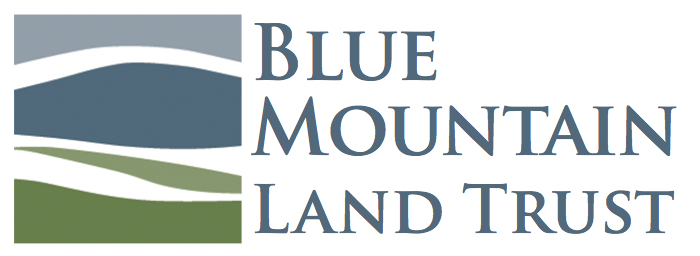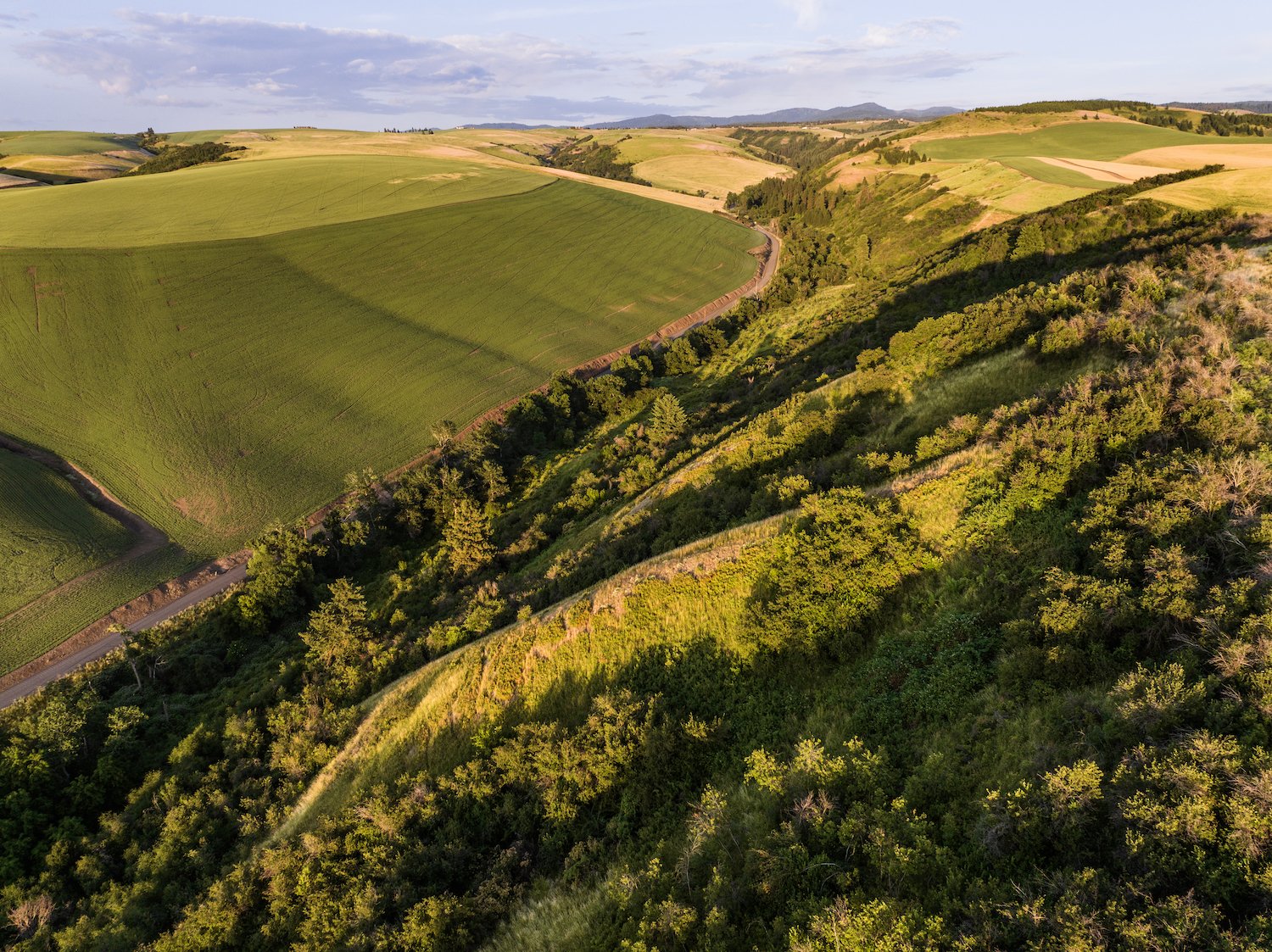Farm fields, forever.
Cultivating a conservation legacy at Mud Creek Dixie Ranch.
In the heart of the Blue Mountain region, a landscape where rolling foothills cradle the essence of the land, a lifeway woven by fertile soils and generous annual rainfall. Tucked in this grassland tree mosaic, the Mud Creek Dixie Ranch, a 661-acre wheat farm outside Dixie, Washington, stands as both a testament to the past and a beacon for the future.
Preserving farmland safeguards regional food security, fosters economic stability, maintains biodiversity, and contributes to climate change mitigation for a sustainable and resilient future.
Earlier this year, Blue Mountain Land Trust completed its 19th conservation easement project, adding 661 acres to farmland protected, forever.
PHOTOGRAPH BY WILLIAM FROHNE
Nestled in one of the Walla Walla Valley’s economically viable dryland farming regions, Mud Creek Dixie Ranch is more than just wheat fields. It’s a cherished legacy owned by sisters Jeannie and Lynne Eagleson, who recognized the importance of protecting their 661-acre farm from the encroaching tide of development.
Their vision, rooted in the desire to preserve the land for future generations, echoes the sentiments of a bygone era. Protecting the Mud Creek Dixie Ranch property builds on an adjacent farm preservation project completed by BMLT in 2012 for a combined 1,100 acres in a significant agricultural area. The sisters wanted to keep the farm in agricultural production and prevent the trend of dividing the land into smaller parcels, a practice that has become more common in the area since 2020.
“We both were astonished at so many houses that we could see on the other tops of different parts of the mountain and around vineyards. We took a drive around the area and saw these large houses being built. We didn’t really want that,” said Lynne. “We thought that our land had been a very good producer of wheat for a long period of time…. so we just felt like we wanted to keep it in farming.”
Beneath the surface of this farmland lies a hidden treasure—the Palouse silt loam, a type of soil of statewide significance and unique identity of the region. Silt loam is a preferred soil type for food, forage, and fiber production due to its water retention, drainage, fertility, workability, aeration, and versatility.
Permanent protection of this resource is critical because the transformation becomes irreversible once the soil yields to development. This isn’t just about safeguarding dirt, it’s about securing the livelihoods of agricultural communities and preserving open spaces that support wildlife and plant species.
“Farmland preservation is important to feed people. You can’t pave the whole world, and so you need green, you need farms, you need to carry on feeding people, “ said Jeannie. “That was our basic reason, and to make sure that it just doesn’t end up being houses.”
PHOTOGRAPH BY WILLIAM FROHNE
The demand to convert farmland to non-agricultural purposes has risen steadily due to population growth, posing a threat to local food systems and each part of the supply chain. As surrounding farms are subdivided and sold for new development, local farm services and suppliers go out of business, impacting the entire community at large. The “Farms Under Threat” study by the American Farmland Trust reveals that if current trends persist, Washington risks losing an additional 192,000 acres of farmland to urban development and low-density housing.
Conservation easements help ensure that landscapes with important soils stay in production, providing a lasting place for the intersection of local food production and a legacy for future generations.
“I think farmland preservation is really important and needs to continue. Farming has been a large part of Washington state for so many years. There are so many people farming crops– grapes, hops for beer, blueberries, wheat, peas, and sorghum. We need to keep rural areas and support them as well, “ said Lynne. “So this is a way to support the farmers to be able to keep farming.”
Beyond its agricultural role, Mud Creek Dixie Ranch doubles as a wildlife refuge. Steep forested uplands and riparian habitats along the winding Mud Creek — a tributary of Dry Creek — create a corridor for Northwest white-tailed deer, golden eagles, and ring-necked pheasants. The Washington Department of Fish and Wildlife (WDFW) identified this area as critical for these priority species, sharing the interconnectedness of farmland and biodiversity.
The conservation easement didn’t happen overnight and took several years of dedicated effort. Collaborating with the Natural Resources Conservation Service (NRCS) and the Washington Recreation and Conservation Office (RCO), BMLT turned a family’s vision into reality. The Mud Creek Dixie Ranch, far from becoming a static piece of protected land, will continue to operate as a vibrant, working farm. Its uplands and riparian areas will be managed with a focus on positive ecological outcomes, ensuring a harmonious balance between agriculture and nature.
“We are very proud to work with the Eagleson family on this project. Mud Creek Dixie Ranch demonstrates the interconnectedness of people, land, and diverse ecosystems. In the Blue Mountain region, every acre tells a story, highlighting the decision to conserve, safeguard, and uplift the delicate balance between progress and preservation for the times ahead,” said Amanda Martino, BMLT Executive Director. “Soils of statewide significance take thousands of years to form and must be preserved for the future.”
PHOTOGRAPH BY WILLIAM FROHNE








